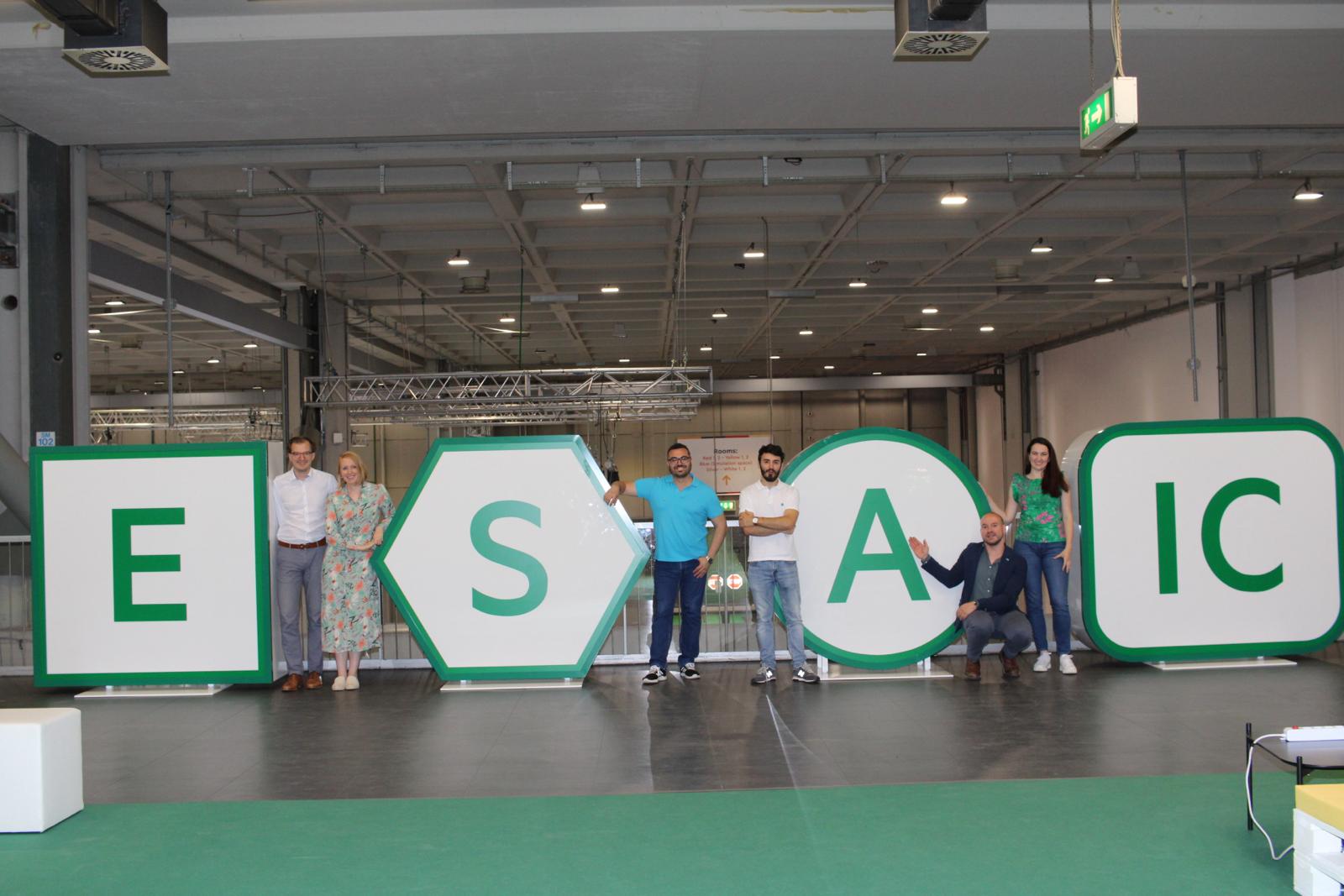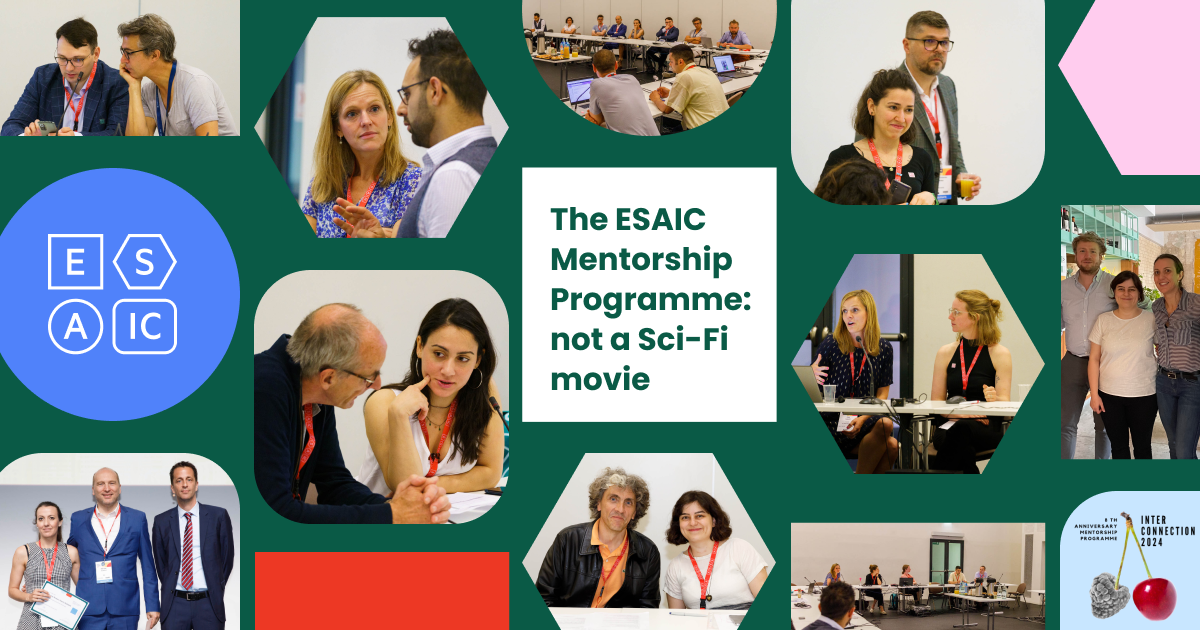ESAIC News
EA20 Newsletter: Honorary member profile: Professor Martin Tramèr
After a decade in the role, Professor Martin Tramèr has now stepped down as Editor-in-Chief of the European Journal of Anaesthesiology (EJA), here Martin reflects on his time in charge, and his future plans.
Q: Welcome to this online edition of Euroanaesthesia 2020 Martin, how does it feel to be made one of this year’s Honorary Members of the newly named ESAIC?
A: This is a great honour indeed. It is not something you can work towards or prepare for. You are chosen by your peers! I see this appointment as an expression of gratitude and recognition for what I have done for the EJA and thus for ESAIC.
I would like to highlight though that what has happened to the journal over the last decade, made possible through extraordinary teamwork, including our journal assistant, deputy Editors-in-Chief, associate editors, language and technical editors, and publisher. To be an Editor-in-Chief is not a one-man job. An Editor-in-Chief is in a sense a conductor of an orchestra, and a conductor is not a soloist. Without all the different musicians, the conductor cannot play a symphony! However, for a symphony’s sound to be perfect, the conductor must be able to share his interpretation of the music piece with the musicians and the musicians must be able to understand the conductor’s message and translate this into the music. I feel that this philosophy has served the EJA well these last ten years.
Q: How did you first become Editor-in-Chief of EJA, and what have been some of your personal highlights over the last decade?
A: Before I became Editor-in-Chief of the EJA, I have been involved in the political activities of ESA (now ESIAC) for many years. First, I was a council member, representing Switzerland, Then, in 2006, I was elected member of the Board of Directors where I acted as a treasurer. During that time, I was asked by the former Editor-in-Chief of the EJA, Tony Adams, to become an associate editor of the EJA. I very much enjoyed that work and years later, when there was an opportunity to take on the job of the Editor-in-Chief, I prepared a business plan and presented it to the Board of Directors. My plan focused mainly on excluding as many low quality, invalid and uninteresting papers as possible before they went into the external peer review process, and on improving the quality of data reporting according to the recommendations established by the Equator network.
Q: What are some of the changes you have brought in during your time at the journal? Have you introduced new types of articles, and how has this affected the impact factor?
A: We have made many changes. I was the first Editor-in-Chief of the EJA who had the opportunity to hire a part-time journal manager. This helped a lot. Bridget Benn had an important role in the development of our journal.
I changed around half of the editorial team, and not everybody was pleased about this, but it was an important step as I wanted to start this project with a new team, and with a critical mass of colleagues who shared the same vision as I did. We invented a triage process that meant that my two Deputy Editors-in-Chief, Bernhard Walder and Walid Habre, and I, scored every week all incoming papers. The aim was to prevent papers that had no, or only very little, chance to get published, from overloading the peer review process.
Through all these years, on average 50% of all incoming papers were rejected through that triage process. We introduced new rules on how to present the different article types, according to the Equator recommendations. This also included structured abstracts and homogenous titles and subtitles that include the study architecture. As a reaction to various cases of massive fraud in the anaesthesiology literature, we introduced strict rules on how ethical approval was obtained by the authors. Articles that did not respond to these requirements were not considered for publication and were sent back to the authors.
We also started various theme series, for instance, “History of anaesthesia”. Some of these series are still alive today, for instance, “Anaesthesia and orphan disease”, a series of specific case reports. As we had several associate editors who were very specialised in paediatric anaesthesia, we developed this particular subgroup of articles and over the years have become one of the leading journals for paediatric anaesthesia.
And as the EJA is a truly international journal (articles are submitted from more than 50 countries) and the majority of the editors are not English native speakers, we decided to create a new associate editors’ function: the language editor. Language editors edited in proper English all accepted articles. We were also working, hand in hand with the publisher, on the format and style of the journal. We improved the front cover and the way tables and figures were presented.
When ESA started a photo contest at Euroanaesthesia, we selected each year the best-submitted photos and published them on the front cover, always linking the theme of the photo to the content of the issue. When that competition was closed, we started a new campaign, inviting our readers to submit photos of their own artwork to be published on the front cover. This campaign proved to be very successful and provided evidence that many anaesthetists are also artists!
Q: So far there has not been too much COVID material in the journal – is the EJA not a suitable journal for too much COVID content?
A: COVID has fostered an incredible amount of scientific data and publications. However, it became clear from the beginning of the crisis that large numbers of these articles were unreliable, invalid, often of frighteningly bad quality or even unethical. It would have been easy to fill almost every issue of the EJA with such COVID material, mainly case reports.
Subsequently, even several prominent, high-ranking journals had to withdraw COVID articles due to ethical or scientific issues. We knew from the beginning of the crisis that the EJA would not be the first address for authors who were keen to publish COVID-material. Also, with COVID, ultra-rapid publishing, mainly in preprint servers (and thus without any peer review) and often in high-impact journals became popular. The EJA publication process, however, did not allow for rapid publication. For all these reasons we abstained from publishing studies or case report dealing with COVID.
Q: Tell about some of your work as the part of the Appraisal Committee of the Swiss Health Technology Assessment (Swiss Medical Board), and also as part of the Human Medicines Expert Committee of the Swiss Agency for therapeutic products (Swissmedic)?
A: I support Swissmedic by providing expert reports and advice on the scientific assessment of documentation relating to the authorisation, market surveillance and approval of medicinal products in the area of anaesthesiology and perioperative medicine including analgesics.
Q: Will you have more time for hobbies now you have stepped down as editor? What do you like to do outside work?
A: I look forward to journal-free weekends! I love gardening. We have trees (quince, mirabelle plums, apples, pears), berries (blueberries, blackberries, strawberries), and two vegetable gardens. And I cycle a lot. The French Alps and the Jura mountains are very close.
Thanks Martin, and we hope you enjoyed Euroanaesthesia 2020!
Read More of our special newsletter covering our virtual congress
Visit our COVID-19 Resource Hub for other news and resources.











